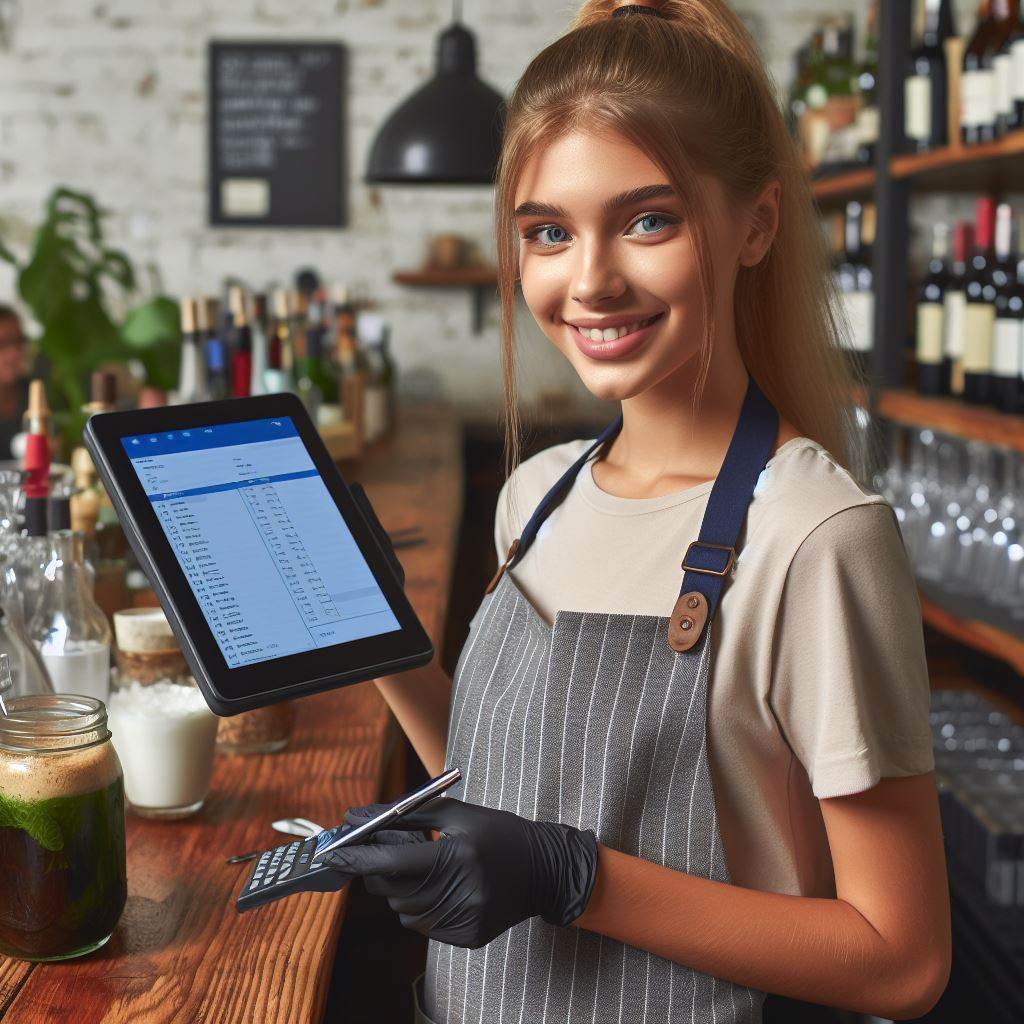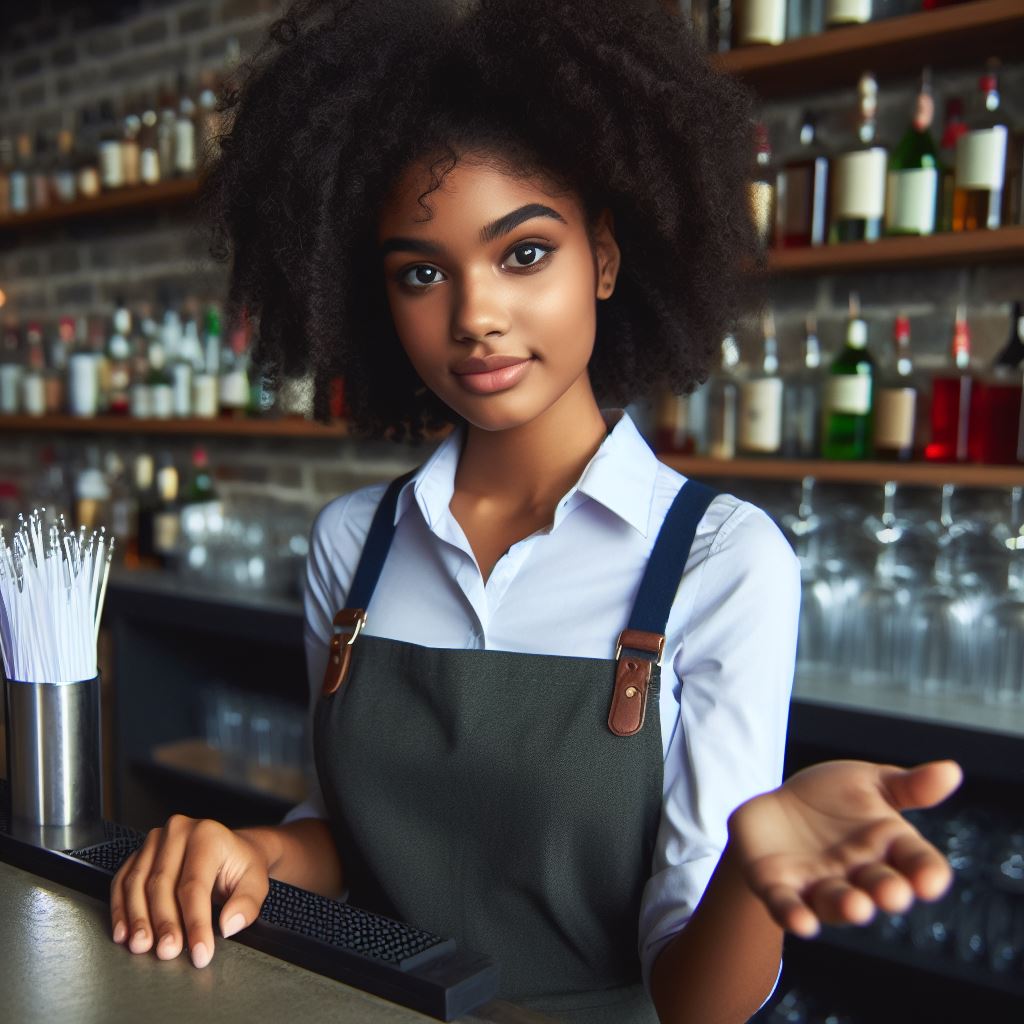Introduction
This post will explore the significance of wine knowledge for bartenders in NZ.
It will discuss how having extensive knowledge about wine can positively impact the bartending profession and enhance the overall experience for customers.
Bartenders with a deep understanding of different wines can confidently make recommendations, pair wines with food, and effectively communicate with customers about their preferences.
Moreover, this knowledge enables bartenders to provide excellent customer service and help customers make informed choices.
This post will also cover the main types of wine and the regions they come from, as well as the basics of wine tasting and understanding wine labels.
By the end of this chapter, bartenders will have a solid foundation of wine knowledge that they can apply in their daily interactions with customers.
Wine knowledge for bartenders in NZ is not just a luxury; it is an essential skill that can elevate the overall experience for both customers and bartenders.
Wine Basics
Definition and types of wine
Wine is an alcoholic beverage made from fermented grapes or other fruits.
There are several types of wine, including red, white, rosé, sparkling, and fortified.
Red wine is made from dark-colored grapes and can range from light to full-bodied.
White wine is made from light-colored grapes and can be dry, semi-sweet, or sweet.
Rosé wine is a pink wine that can be made from a blend of red and white grapes.
Sparkling wine has bubbles and can be either white or rosé, with Champagne being the most famous type.
Fortified wine has added spirits, such as brandy, and includes ports, sherries, and vermouths.
Grape varieties and characteristics
Grapes used for winemaking come in different varieties with distinct characteristics.
Personalized Career Consulting
Unlock your potential with expert career advice tailored to your goals. Get personalized guidance and actionable steps toward your dream career in New Zealand.
Get StartedCommon red grape varieties include Cabernet Sauvignon, Merlot, Pinot Noir, and Syrah.
Cabernet Sauvignon is known for its boldness, while Merlot is softer and fruitier.
Pinot Noir is lighter and more delicate, and Syrah offers a spicy and robust profile.
Popular white grape varieties include Chardonnay, Sauvignon Blanc, Riesling, and Pinot Grigio.
Chardonnay can be buttery and full-bodied, while Sauvignon Blanc is crisp and refreshing.
Riesling can range from dry to sweet, and Pinot Grigio is light and zesty.
Basic wine tasting techniques
- Wine tasting involves examining the appearance, aroma, taste, and finish of a wine.
- Start by looking at the wine’s color, clarity, and viscosity in a well-lit area.
- Swirl the wine gently in the glass to release its aromas and take a sniff.
- Identify the wine’s aromas, such as fruits, spices, floral notes, or oakiness.
- Take a small sip and let the wine coat your entire mouth.
- Notice the wine’s taste elements, such as acidity, sweetness, tannins, and alcohol level.
- Pay attention to the wine’s finish, which is the impression it leaves after swallowing.
- Consider the wine’s balance, complexity, and overall enjoyment.
- Keep in mind that tasting wine is subjective, and everyone may perceive flavors differently.
By understanding the basics of wine, bartenders in NZ can enhance their knowledge and better assist customers in their wine choices.
Read: Sustainable Practices in NZ Bartending
Popular Wine Regions in NZ
Overview of major wine regions in NZ
- Marlborough – known for producing exceptional Sauvignon Blanc wines.
- Auckland – produces a wide range of wine styles, including Chardonnay, Cabernet Sauvignon, and Syrah.
- Central Otago – famous for its Pinot Noir wines, known for their complexity and elegance.
- Hawke’s Bay – known for its Bordeaux-style blends, Chardonnay, and Syrah.
- Waipara Valley – renowned for its aromatic whites such as Riesling and Pinot Gris.
Notable grape varieties and wine styles from each region
- Marlborough – Sauvignon Blanc, known for its vibrant tropical fruit flavors and crisp acidity.
- Auckland – Chardonnay, producing both elegant and rich styles to suit different palates.
- Central Otago – Pinot Noir, characterized by its red fruit flavors, spiciness, and velvety texture.
- Hawke’s Bay – Bordeaux-style blends, showcasing ripe dark fruit flavors and well-integrated tannins.
- Waipara Valley – Riesling, offering aromatic profiles, balanced acidity, and a range of sweetness levels.
Importance of local wines and supporting NZ winemakers
New Zealand wines have gained international recognition for their exceptional quality and distinct characteristics.
Supporting local winemakers not only promotes the country’s wine industry but also allows bartenders to offer unique and high-quality wines to their customers.
Serving local wines can enhance the dining experience, showcasing the diversity and excellence of New Zealand’s wine regions.
By understanding the major wine regions in NZ and the notable grape varieties and wine styles they produce, bartenders can confidently recommend and serve wines to their customers.
Whether it’s a refreshing Marlborough Sauvignon Blanc, a rich Auckland Chardonnay, or a velvety Central Otago Pinot Noir, each region offers something unique and exceptional.
Furthermore, supporting local winemakers is essential for the growth and sustainability of the New Zealand wine industry.
Transform Your Career with a Professional CV and Cover Letter
Stand out to employers with an ATS-optimized resume and tailored cover letter designed to match your dream role. Let us craft your job application materials for success!
Get StartedBartenders can play a critical role in promoting and showcasing local wines, creating a sense of pride and appreciation for the country’s winemaking talents.
By featuring NZ wines on their menus and sharing their knowledge with customers, bartenders contribute to the success and recognition of the local wine industry.
Moreover, serving local wines allows bartenders to offer their customers a memorable experience.
New Zealand is known for its stunning landscapes and natural beauty, and its wines reflect this uniqueness.
Introducing customers to the diverse flavors and styles of NZ wines can transport them to the picturesque vineyards and create a deeper connection with the country’s culture and identity.
In fact, understanding New Zealand’s popular wine regions, their notable grape varieties, and the importance of supporting local winemakers empowers bartenders to provide excellent wine recommendations and enhance their customers’ dining experiences.
By embracing the diversity and excellence of NZ wines, bartenders can contribute to the growth and recognition of the country’s wine industry while offering their customers unique and unforgettable wine experiences.
Food and Wine Pairing Tips
Key principles of food and wine pairing
- Consider the weight and intensity of both the food and the wine to create balance.
- Pair complementary flavors to enhance both the food and wine.
- Pay attention to the acidity level of the wine and how it interacts with the flavors of the dish.
- Match the wine’s sweetness level with the sweetness level of the food.
- Take note of the tannins in red wines and pair them with fatty or rich foods.
Common wine and food pairings in NZ
- Marlborough Sauvignon Blanc: pairs well with fresh seafood, particularly oysters and green-lipped mussels.
- Central Otago Pinot Noir: a great match for roasted or grilled lamb dishes.
- Hawke’s Bay Syrah: complements dishes like venison or other game meats.
- Chardonnay from Auckland: pairs well with creamy pasta dishes or roasted chicken.
- Riesling from Waipara Valley: goes well with spicy Asian cuisine or Thai curries.
Tips for suggesting wine pairings to customers
- Ask about the customer’s preferences and the flavors they enjoy in order to make appropriate recommendations.
- Consider the ingredients and cooking methods used in the dish to understand its flavor profile.
- Explain why the suggested pairing works well, highlighting the flavor interactions.
- Offer alternative options if the customer prefers a different wine style or if the suggested wine is not available.
- Encourage experimentation and suggest trying something new to enhance their dining experience.
By understanding the key principles of food and wine pairing and being knowledgeable about common pairings in New Zealand, bartenders can confidently suggest wine pairings to their customers.
With these tips, bartenders can enhance the dining experience and help customers discover new flavors and combinations.
Remember, food and wine pairing is an art, and with practice and experience, bartenders can master it.
Read: Famous NZ Bartenders: Their Stories
Wine Service and Storage
Proper wine storage conditions
- Keep wine bottles in a cool and dark environment to prevent fluctuations in temperature and light exposure.
- Store wine horizontally to keep the cork moist and prevent it from drying out, which can lead to oxidation.
- Avoid storing wine in the kitchen or near appliances that emit heat, as high temperatures can spoil the wine.
- Humidity levels should be around 70% to prevent the corks from drying out and allowing air to enter the bottle.
- Invest in a wine fridge or cellar to maintain the ideal storage conditions for wine.
Wine serving temperatures for different types of wines
- Sparkling wines and Champagne should be served between 8-10°C to preserve their freshness and effervescence.
- White wines are best served between 10-12°C to enhance their aromas and fruit flavors.
- Light-bodied red wines should be served at 12-14°C to showcase their delicate nuances.
- Medium-bodied red wines taste best between 14-16°C, allowing their complexity to shine through.
- Full-bodied red wines should be served at 16-18°C to bring out their bold flavors and smooth tannins.
Opening and presenting wine bottles
- Start by cutting the foil just below the lip of the bottle using a foil cutter or a knife.
- Insert the corkscrew slightly off-center and twist it into the cork until only one twist remains visible.
- Lift the cork gently, ensuring it doesn’t pop or make a loud noise, as this may indicate improper storage.
- Present the bottle to the customer, displaying the label and allowing them to inspect it if desired.
- Pour a small amount of wine into the customer’s glass for them to taste and approve before serving the rest.
- When pouring wine, hold the bottle by the base, with the label facing the customer.
- Fill the glass up to two-thirds full, allowing room for swirling and releasing the wine’s aromas.
- After serving, place the wine bottle on the table within the customer’s reach for easy access.
Read: Customer Service Tips for Bartenders

Wine List Development
Creating a balanced and diverse wine list
Having a well-developed wine list is essential for any bar that aims to provide a quality wine experience to its customers.
Creating a balanced and diverse wine list ensures that there are options to suit different tastes and preferences.
Boost Your Career with a Standout LinkedIn Profile
Attract recruiters and expand your network with a fully optimized LinkedIn profile tailored to highlight your strengths and professional goals. Let your profile open doors to new opportunities!
Get OptimizedFactors to consider when selecting wines for a bar
When developing a wine list, it is crucial to consider various factors.
Firstly, understanding the target customers and their preferences is essential.
This knowledge allows you to curate a list that caters to their tastes and provides a satisfying experience.
The style and ambiance of the bar should also be taken into account.
The wine selection should complement the bar’s atmosphere and contribute to the overall experience.
For example, a cozy wine bar may focus on offering a wide variety of red wines, while a beachfront bar may feature refreshing white and rosé options.
Additionally, considering the food menu and providing wine pairings can enhance the dining experience for customers.
This not only increases sales but also showcases the compatibility of food and wine, making the overall experience more enjoyable for patrons.
When selecting wines for the list, it is crucial to consider their popularity and demand in the local market.
Conducting market research and staying updated on wine trends can help ensure the selection is aligned with customer preferences.
How to educate staff and customers about the wine list
Once the wine list is developed, it is important to educate both staff and customers about the options available.
Providing training sessions for bartenders can enhance their knowledge and confidence in recommending wines to customers.
Encouraging staff to taste and familiarize themselves with the wines on the list enables them to provide useful suggestions and descriptions to customers.
Creating detailed wine descriptions and tasting notes can further assist staff in guiding customers’ choices.
To engage customers and encourage exploration of the wine list, hosting wine tasting events or offering wine flights can be beneficial.
This allows customers to experience a variety of wines and encourages them to try new options.
In general, wine list development involves creating a balanced and diverse selection, considering various factors, and educating staff and customers.
A well-curated wine list enhances the overall bar experience, increases customer satisfaction, and boosts sales.
Read: Building a Career in NZ Bartending
Wine Sales and Promotion
Techniques for upselling wine
- Recommend higher-priced wine options that complement the customer’s preferences and the menu.
- Highlight unique or limited edition wines that create a sense of exclusivity.
- Suggest wine pairings that enhance the flavors of the customer’s chosen dishes.
- Offer a taste of a premium wine to encourage customers to upgrade their selection.
- Provide detailed descriptions and stories about specific wines to evoke interest and desire.
Wine promotion events and collaboration opportunities
- Organize wine tasting events to introduce new wines or wine regions to customers.
- Partner with wineries to offer specialized wine dinners or themed events.
- Collaborate with local businesses for joint promotions, such as pairing wine with gourmet chocolates.
- Host educational classes or workshops to educate customers about wine appreciation.
- Create loyalty programs that reward customers for wine purchases, encouraging repeat business.
Importance of wine knowledge in enhancing customer experience and sales
Having comprehensive wine knowledge is crucial for bartenders in New Zealand to provide exceptional customer experiences and boost sales. Here’s why:
- Building Trust: Knowledgeable bartenders instill confidence in customers, reassuring them that they are making informed choices.
- Enhancing Recommendations: With extensive wine knowledge, bartenders can effectively guide customers towards wines that suit their taste preferences and budget.
- Upselling Opportunities: By understanding wine varieties, regions, and styles, bartenders can upsell higher-priced or premium wines confidently.
- Creating Memorable Experiences: Sharing interesting facts and stories about wines can elevate the overall dining experience, leaving a lasting impression.
- Improved Pairing Suggestions: Wine knowledge enables bartenders to recommend wines that perfectly complement the flavors of the dishes, creating harmonious combinations.
- Handling Customer Inquiries: Expertise in wine allows bartenders to respond accurately to customer questions regarding wine production, grape varieties, and more.
- Upskilling the Team: Sharing wine knowledge with fellow staff members fosters a collaborative learning environment and enables consistent service quality.
- Long-Term Customer Relationships: A well-informed bartender who can offer personalized wine recommendations can build a loyal customer base.
- Increasing Sales: By effectively showcasing wine options and demonstrating knowledge, bartenders can influence customers to explore different wines and increase overall sales.
In review, wine sales and promotion play a vital role in the success of bartenders in New Zealand.
Employing upselling techniques, organizing wine events, and having extensive wine knowledge all contribute to enhancing the customer experience and driving sales.
By continuously expanding their wine knowledge, bartenders can become trusted advisors for customers and create memorable moments that keep them coming back for more.
Building Wine Knowledge
Resources and courses for bartenders to expand their wine knowledge
- Join online wine education platforms like Wine Folly and the Wine Scholar Guild.
- Enroll in dedicated wine courses such as the WSET Level 1 and Level 2 certifications.
- Read books about wine, including “The World Atlas of Wine” and “Oxford Companion to Wine”.
- Utilize online resources like wine blogs, podcasts, and YouTube channels to gain insights.
- Subscribe to industry magazines such as “Wine Spectator” and “Decanter” for valuable wine information.
Wine tasting events and workshops in NZ
- Attend wine tastings organized by local wineries and distributors to familiarize yourself with different flavors.
- Participate in workshops led by wine experts who can provide in-depth knowledge on specific wine regions.
- Visit wine festivals like the Marlborough Wine & Food Festival and New Zealand Wine Festival.
- Join wine clubs or associations that regularly host wine-related events and educational sessions.
- Take part in blind tasting competitions to sharpen your palate and identify wine characteristics accurately.
Networking with sommeliers and wine professionals
- Establish connections with renowned sommeliers and industry professionals to learn from their experiences.
- Attend industry conferences, trade shows, and seminars where you can meet and connect with wine experts.
- Join online forums and social media groups focused on wine to engage in discussions with professionals.
- Participate in wine-focused events or fundraisers where you can interact with sommeliers and wine enthusiasts.
- Seek mentorship opportunities with sommeliers who can guide you in expanding your wine knowledge.
By exploring the available resources, attending wine events, and connecting with industry professionals, bartenders in NZ can significantly expand their wine knowledge.
The combination of self-study, practical experience, and networking will enhance their ability to recommend and serve wines confidently to guests.
Cheers to continuously growing as wine experts in the dynamic world of bartending.
Conclusion
Understanding wine is paramount for bartenders in New Zealand.
It not only enhances the customer experience but also contributes significantly to boosting sales and elevating professionalism within the industry.
Encouragement to continue learning and exploring the world of wine is essential.
Wine is a vast and dynamic subject, with endless varieties, regions, and styles waiting to be discovered.
By continuously expanding your knowledge and expertise, you not only enrich your own experience but also open new avenues for personal and professional growth.
Delving deeper into the world of wine allows bartenders to confidently engage with customers, recommending suitable wines based on preferences, pairings, and occasions.
This level of expertise builds trust and loyalty among patrons, enhancing their overall dining or drinking experience.
Moreover, ongoing wine education enables bartenders to stay abreast of industry trends, emerging vineyards, and innovative winemaking techniques.
This knowledge empowers them to curate exciting and diverse wine lists, catering to the evolving tastes and preferences of their clientele.
Beyond the immediate benefits to your career, immersing yourself in the world of wine is a journey of discovery and enjoyment.
Exploring different grape varieties, terroirs, and winemaking traditions offers endless opportunities for sensory delight and intellectual stimulation.
Furthermore, developing a deep appreciation for wine fosters a sense of camaraderie and connection within the bartending community.
Sharing experiences, tasting notes, and insights with colleagues enhances mutual learning and collaboration.
The importance of wine knowledge for bartenders in New Zealand cannot be overstated.
It is not only a professional necessity but also a source of personal enrichment and fulfillment.
So, raise your glass to the journey ahead, and continue exploring the fascinating world of wine with passion and curiosity. Cheers!




